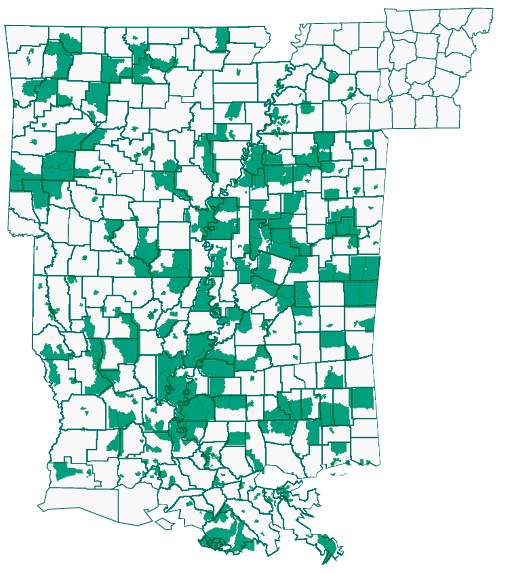Expanding Access to Healthy Food Options
February 10th, 2016
In the Mid South, small, rural towns and low-income neighborhoods in urban areas have limited access to healthy, fresh food. The challenge of accessing healthy food options contributes to higher rates of diabetes, obesity and other health-related issues in the region. People with limited access to affordable and nutritious food are oftentimes dependent on nontraditional food stores, like convenience stores, or do not have adequate transportation options to access healthy food outlets. Likewise, the lack of grocery stores, farmers’ markets, and other healthy food providers, also described as “food deserts,” contributes to the devastating impact of health disparities in high-poverty communities and communities of color.
The United States Department of Agriculture (USDA) defines food deserts as low-income census tracts where a share of its population has low access to a supermarket or large grocery store. Low access is defined as more than 1 mile from a supermarket or large grocery in urban areas and as more than 10 miles in rural areas. In the Mid South, approximately 23.2 percent of low-income census tracts have low access to a healthy food retail outlet. See Map.
Food Deserts Across the Mid South
Source: USDA Economic Research Service, Food Access Research Atlas
Increasing access to healthy food options in the Mid South is pivotal in helping to reduce high rates of obesity and obesity-related conditions and health disparities. To increase the availability of healthy food options in low-income and underserved communities, one policy option includes incentivizing grocery retailers to locate in communities where the need is greatest. By providing critical loan and grant financing, programs, like the Fresh Food Retailer Initiative, help to expand access to healthy, fresh food in low-income and underserved communities.
Recent research from the Tulane Prevention Research Center revealed that the Fresh Food Retailer Initiative played a primary role in reducing the food access disparities that existed after Hurricane Katrina. Tulane’s research also revealed that the number of supermarkets in New Orleans (once the worst urban food desert in the nation) returned to pre-Katrina levels – as of 2014, the number of supermarkets in New Orleans had returned to more than 30, compared to less than half of that almost 10 years ago.
The success of the Fresh Food Retailer Initiative in New Orleans, Louisiana, highlights the strength in partnerships with Community Development Financial Institutions (CDFIs), such as HOPE, in creating access to healthy food options in high-poverty areas. Additionally, the Fresh Food Retailer Initiative also helps to support local economic development through increased employment and neighborhood revitalization opportunities.
Meeting the needs of residents who live in high-poverty communities in the Mid South requires innovative solutions that have meaningful impact. Policy solutions, like the Fresh Food Retailer Initiative, have positive impacts on both community health and economic development.
Learn more about HOPE’s Healthy Food Financing Initiative.
Sources:
American Nutrition Association. (n.d.). USDA defines food deserts. Nutrition Digest, 37(4). Retrieved from http://americannutritionassociation.org/newsletter/usda-defines-food-deserts
Englar, Naomi, Tulane Prevention Research Center. (n.d.). New Orleans no longer a supermarket ghost town. Retrieved from http://prc.tulane.edu/news/detail/76553/New-Orleans-no-longer-a-supermarket-ghost-town








